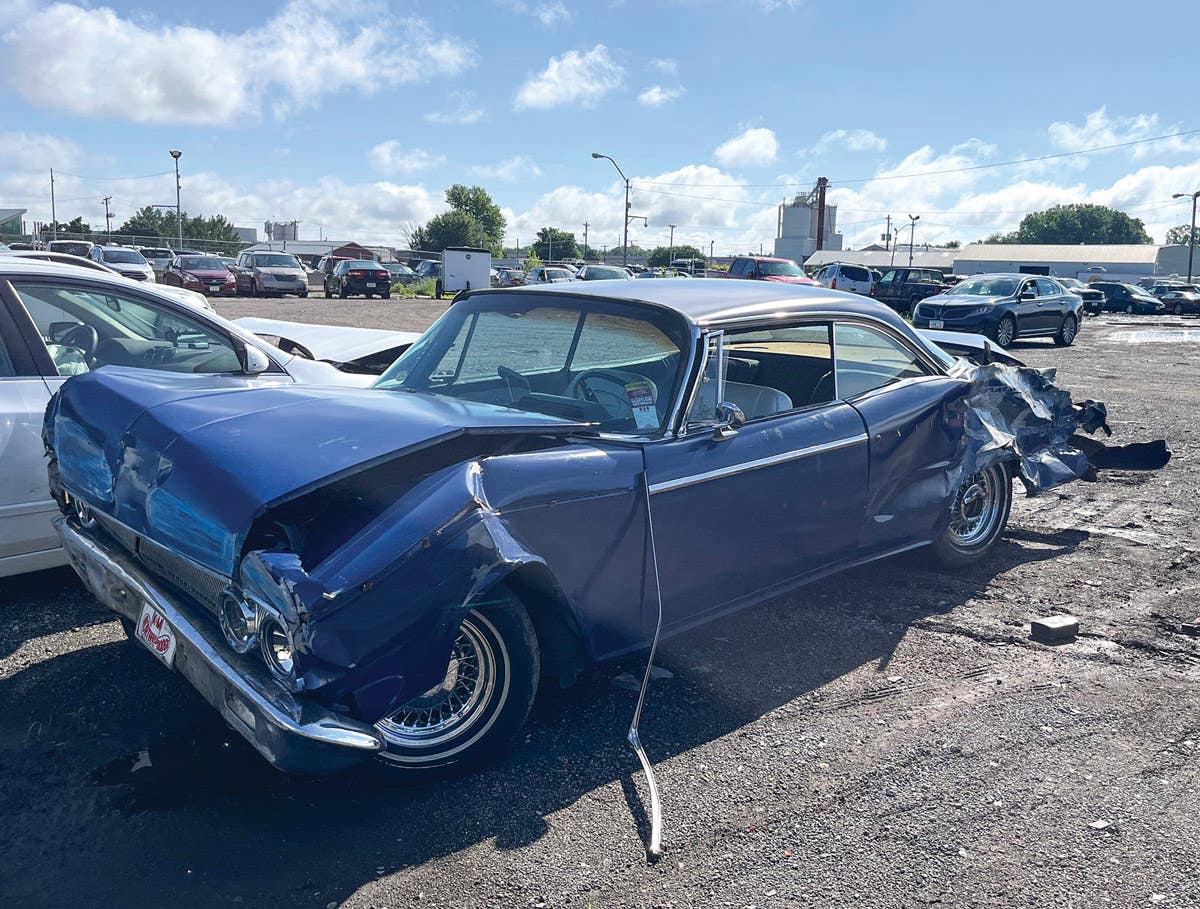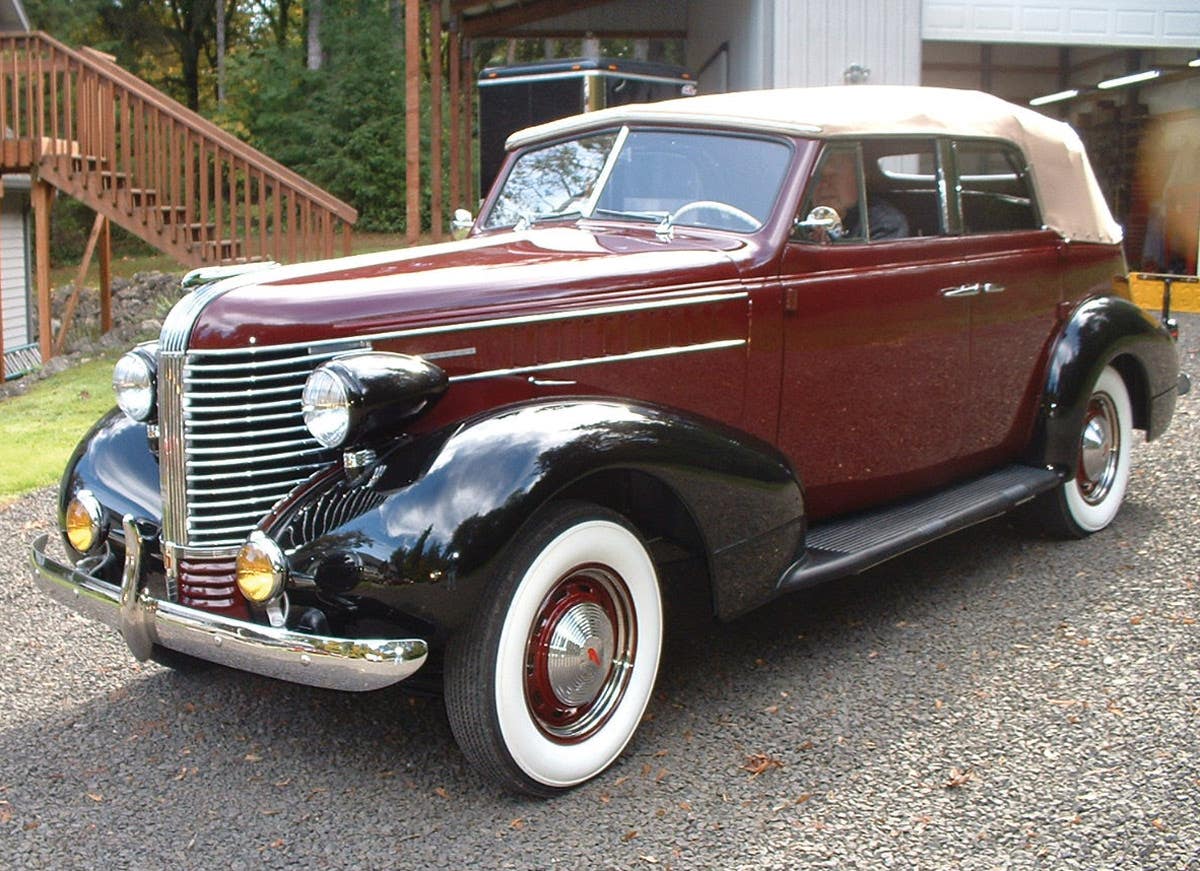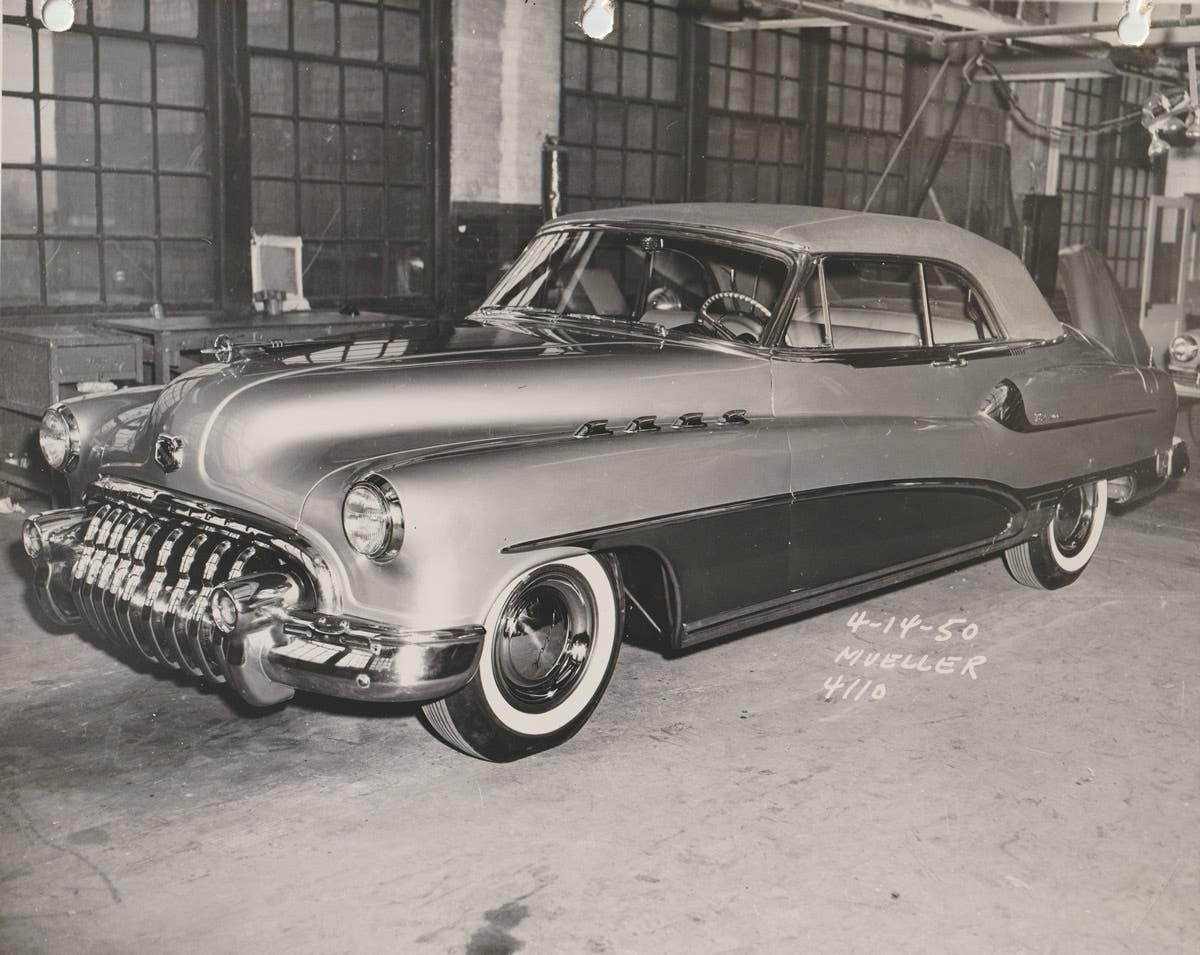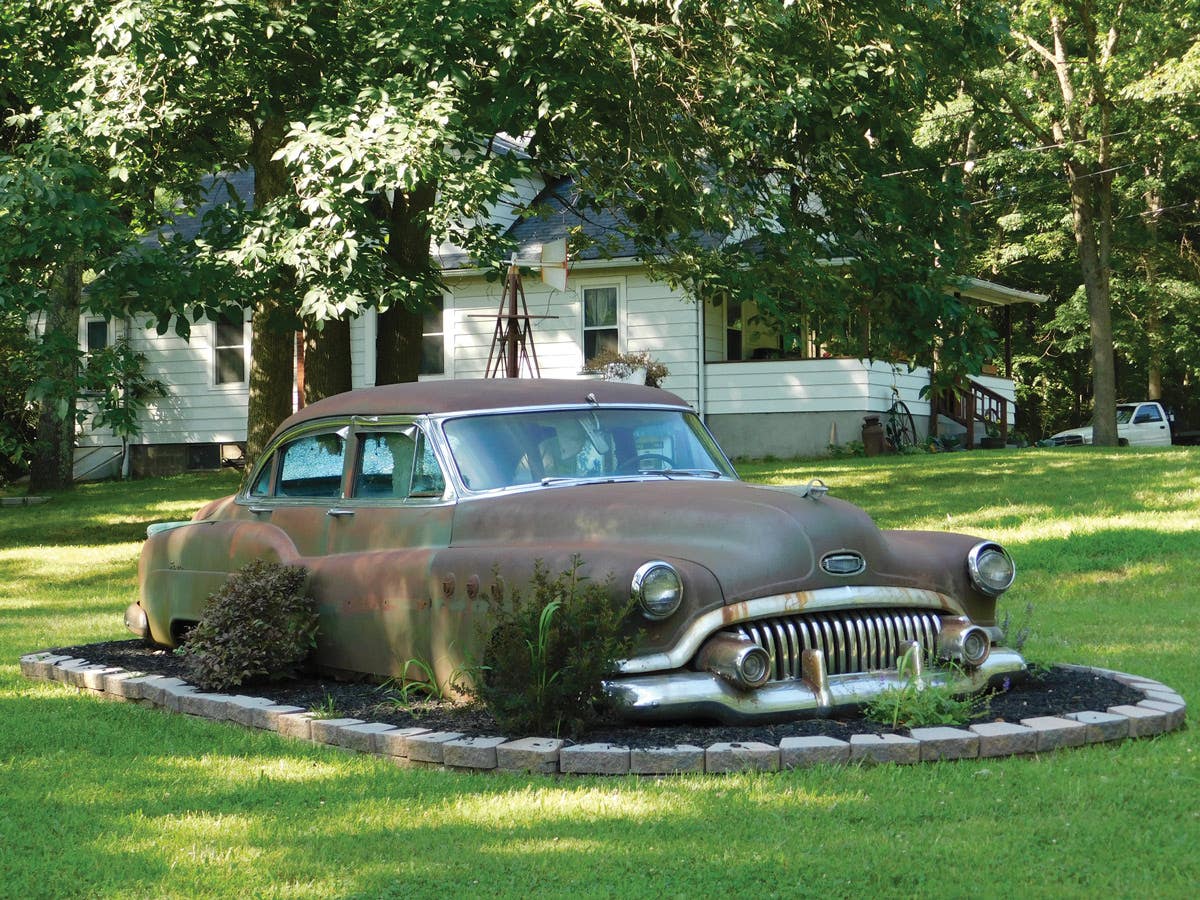Car of the Week: 1963 Chevrolet Corvette
Steve Stone has rolled up an astounding 467,000-plus miles on his serious-looking, jet black 1963 Chevrolet Corvette convertible.
By Brian Earnest
Unlike a lot of Corvette lovers who find one Corvette leads to another over the years, Steve Stone wanted only one.
When Stone saw the stunning new 1963 ’Vette hit the market, even though he was only 18 years old, he knew that was the car for him.
Forty-eight years later, it’s clear Stone was right. The Madison, Wis., resident has rolled up an astounding 467,000-plus miles on his serious-looking, jet black convertible. When it comes to working Corvettes that have earned their keep, Stone’s car lives in rare air.
The car has been driven almost daily for nearly all its life — most of which was spent in Cedar Rapids, Iowa. The car has ventured to all 48 lower states — including 46 in the past eight years — and nine Canadian Provinces. It has survived trips of 7,100 miles in 2008 and 6,000 miles in 2007. And many of its miles in recent years have come with a trailer rolling behind it.
The car is now on its fourth engine, it’s had the front clip wrecked and replaced four times, it’s been repainted four times and had the interior upholstery replaced twice. Even the frame hasn’t been spared; it rusted through and broke back in the 1980s.
After so many thousands of hours in the seat of his ’63, Stone has a hard time imagining life without the car. He admits that at this point, the car and its ever-spinning odometer has become a bit of celebrity to those who know it, and a conversation piece to the many people he meets on the road during what he calls his “road trips.”
“Anywhere we go, when we stop, people will walk over to it,” Stone said. “Anytime we stop for gas, it’s a half-hour stop because I wind up talking to people.
“We have people taking pictures and videos of it all time, with and without the trailer. The people who see it now are wanting to know about the miles and where am I going next. We’re always planning a trip.”
Not many people would view the ’63 Corvette convertible as an ideal vacation machine. The car has no trunk, and with the soft top folded down, there is precious little cargo room. That doesn’t seem to bother Stone and his wife, Marilynn, who have become experts at packing light and making use of their 600-lb. utility trailer.
“We don’t pull the trailer on every trip,” Stone said. “When we don’t have it, everything has to go in here [behind the top], so everything has to be soft-back, basically. You can’t have anything hard-sided. Then to get to anything, you kind of unpack everything, but I pack it so the most-used stuff is on top.
“We go canoeing in the Boundary Waters, and we have compact lightweight bags. Like our sleeping bags are in compression bags… We have a hitch built for mid-years… We put the ball on it and a harness for it back there. The trailer is a 5 x 8 [-foot] utility trailer that weighs 600 lbs. empty, with 15-inch tires so it pulls well. It’s got an extra-long tongue on it to make room for the canoe, which is 22-foot long. We just strap it right on top of the trailer.”
The couple married in 1988, “but didn’t really start trippin’ until 2002,” Steve said. “I like driving it, obviously, and my wife likes riding in it, so it’s the perfect match. We just like going places. There’s been places we didn’t take [the Corvette] and kind of wished we did.”
Though Stone can hardly picture life without his Corvette these days, there was a time when he tried to sell it and he fully expected the car to be long gone before he got back from the military. That was two years after he somehow talked his parents into helping him buy probably the coolest new car on the market at the time. “When they came out with the Sting Ray and I saw a picture of the convertible, I thought, ‘Well, I should have that.’ I had a ’56 Chevy and I sold that so I could buy this. Dad co-signed with me with Mom’s approval. I was 18 when I bought it,” Stone said.
“It was actually for sale in ’65 when I got drafted. That’s when I thought I was going to Vietnam. It wouldn’t sell, and I didn’t go to ‘Nam, so I managed to hang onto it and raised a family. And now it’s not for sale.
“When I was in the service that year I didn’t drive it, because I was in a place where I couldn’t have it. That’s the only year I didn’t drive it. I’ve always put miles on it. The first year I put 33,000 miles on it. I put on 30,000 the second year, and that third year is when I didn’t drive it… It was never a question of whether I was going to keep it, except when I was drafted. After I got back from the service, I was never going to sell it.”
The Corvette received one of the most memorable re-stylings ever for an American automobile in 1963. It was the year of the “split-window” fastback coupe, but that was only a small part of the re-make. The sides of the car feature two long, horizontal “wind split” indentations or louvers that resemble brake cooling ducts, although they were not functional. The twin side-by-side headlights were hidden in an electrically operated panel. This was more than a styling gimmick, as it added to the car’s basic aerodynamic design. Recessed fake hood louvers, front fender louvers, vents on the roof side panels of the fastback “split-window” coupe and ribbed rocker panel molding were all part of the new design. The interiors received circular gauges with black faces. There was storage space under the seats of early models.
Standard equipment included a windshield washer, carpeting, outside rearview mirror, dual exhaust, tachometer, electric clock, heater and defroster and cigarette lighter. Interiors were available in Black, White, Silver, Silver-Blue, Daytona blue, Red and Tan. For the first time since 1957, a Beige softtop was available. Exterior paint options were: Tuxedo Black, Ermine White, Riverside Red, Silver Blue, Daytona Blue, Saddle Tan and Sebring Silver. All were available with a Black, White or Beige soft top.
The base engine was a 327-cid, 250-hp, four-barrel V-8 with 10.5:1 compression. Three other 327s were also available with higher compression and more horses — 300, 340 and the L84 “fuelie” at 360. A three-speed sychromesh transmission with a floor-shifter was standard, with a four-speed manual and two-speed Powerglide on the options menu.
Stone got one of the 10,919 convertibles built for the model year — 10,549 of the coveted coupes were also built. The ragtops carried a base price of $4,037, which was $220 less than the coupe.
Stone’s car was delivered wearing all black, inside and out. It carried the 340-hp L76 engine and the manual four-speed.
“Where I was you didn’t buy one off the lot, you had to order it,” he recalled. “I ordered it with two tops. I got the hardtop and the softtop both. It came with the 340 horse, Positraction , four-speed, whitewall tires and the signal-seeking radio. That was it for the options as I remember. There was no power steering, no power brakes. I still don’t have them.
“There were four different engine options. I wanted the carburetor. I didn’t want the fuelie. It had 4.11 gears. That’s the way it came.”
Stone still has the removable hardtop, but it has rarely been on the car. “The hardtop was for winter when I first had it because that was my only set of wheels,” he said. “I put it on a few years ago for the first time in 30 years.”
While Stone has been determined to keep his Corvette rolling indefinitely, he has little interest in originality or keeping the car “stock.” If he feels like upgrading or changing something, he does. If something can be improved or tweaked to fit his needs, he doesn’t think twice — starting with the engine. Three times he has decided to swap engines, and there likely will be more transplants in the futures.
“This is the fourth engine and it’s a no-lead engine, 400 hp,” he said. “The original was 11 1/4 :1 and it came out after 180,000 total miles on it. Then I ran a 350 with 12 to 1 until gas [changed], then I took that out and went to a low-compression 350. I got tired of the low power and started jacking around with engines and finally wound up with this four years ago. It’s a 350 with 400 hp. … I don’t race this. I drive it with tall gears and get 18 miles a gallon on the highway. I still have the original engine. It’s not in pieces, it’s just been bored out 60/1000ths all the way around. It would run again, but there is no reason to put that kind of compression back in it.”
A pair of aftermarket ignition systems operate under the hood. Stone says he simply needs the security of knowing he won’t get stuck with an electrical problem out in the wilderness or some stretch of lonely highway. “We run two ignitions on it; two MSD systems. One runs it and one’s a backup, because where we go we don’t have the advantage of having the ability to get parts right away,” he said.
“I tell people you just replace things as needed… The whole front end has been replaced four times. It was from accidents – the front end just got wrecked. The most recent was in Madison on a car hauler and it wasn’t tied down well enough and they let it get loose and they busted the nose on it. Every time it got wrecked, we repainted it, so that’s been four times. About every 8 to 10 years, on average, it will get wrecked.
“I think there has been two complete interiors — carpets and seat covers. The dash is all original. The console is original — those consoles are expensive now! … I think this is the third [softtop]. If you don’t run the top up and down, you don’t wear them out too bad. A lot of years, I didn’t run the top up and down, really.”
Two of most noticeable custom touches on the car are the custom hood — which features functional louvers instead of faux louvers on the factory hood — and the menacing black pipes. Both are lasting vestiges from days gone by when Stone dabbled in drag racing and autocross. The all-business dog dish hubcaps complete the no-frills, road warrior look that Stone has long subscribed to.
“I did some performance stuff in the ’70s — I actually put disc brakes under this car — and then headers and side tubes, and I put the MSD ignition in it and I was doing drag racing and auto-crossing. I really liked drag racing, but then I kind of quit doing it. But that’s the way I wanted it to look,” he said. “Now with the pipes this way, I don’t have to deal with the exhaust system when I go under the car.
“I’ve never been an admirer or proponent of having a lot of chrome on a car. Chrome sidepipes don’t do [much] for me.”
If Stone has his way, his tireless ’63 will be still be criss-crossing North America years from now, long after he’s gone. And it’s certainly not going anywhere while he’s still around. It’s the only car he ever really wanted, and Stone doesn’t see that changing.
“I’ve had it this long and there’s no reason to change it,” he said. “It’s got what I want. It’s got power, it’s got simplicity, it’s got history. My kids were raised in it. They drive it. My grandson’s driving it now. It’s a family heirloom now.
“It’s going to be handed down to the No. 4 son. It won’t be parked.… He knows. Him and his wife will not let it be parked. They’re willing to take trips in it, too.”
_______
Got a car you’d like us to feature as our “Car of the Week“? We want to hear from you! E-mail us and tell us all about it.
_______







